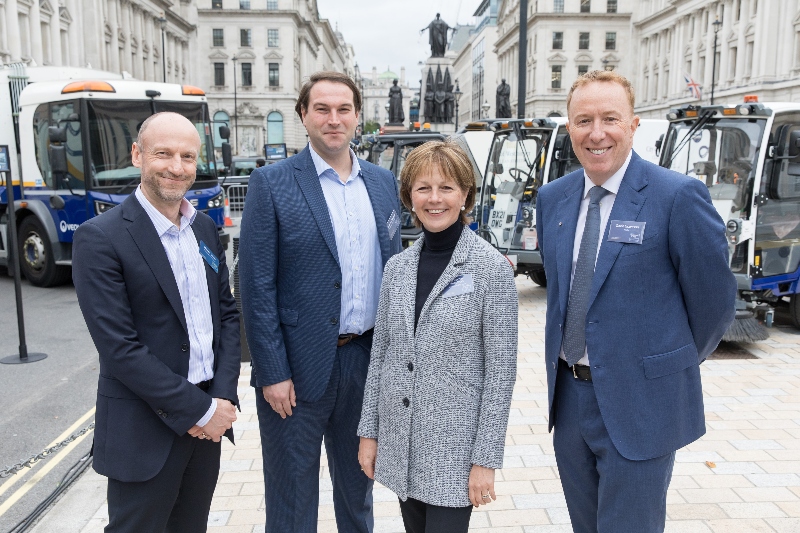Cllr James Spencer, cabinet member for city management, Westminster City Council looks at the local authority’s switch to electric vehicles for waste collection and street cleansing.


The impacts of climate change are beginning to affect our day to day lives. Tackling this issue is the greatest challenge of our age, and sitting at the centre of a global city, Westminster is developing creative solutions to improve the environment and maintain its status as a leading tourist destination.
The City of Westminster has some of the highest carbon emissions of any local authority area, with parts of the city experiencing some of the worst air quality in the whole country. In 2018, Westminster produced 1.8 million tonnes of greenhouses gases. Extreme weather is becoming ever more frequent, with residents suffering extensive damage to their homes and businesses during floods in July and October this year.
It’s a crisis that Westminster City Council is determined to tackle head-on. Two years ago, the council declared a climate emergency, announcing ambitious targets to become a net zero council by 2030 and a net zero city by 2040.
Westminster is an extremely busy city. In normal times, we would see more than a million visitors to the city every day. As well as being the hub of cultural and economic activity at the heart of the capital, Westminster is also home to 220,000 residents and 50,000 businesses. Keeping our streets clean and safe is therefore a 24/7 operation.
The council makes one million waste collections a week, collecting 450 tonnes of waste every day. There are more than 100 street cleaning vehicles running every day of the week, the unfortunate side effect of which is that the council’s own vehicles were producing around 3,000 tonnes of carbon each year.
In order to deliver on our pledge of a carbon neutral Westminster, the council has to lead by example. Reducing the size of our own carbon footprint is a central part of our plan to build a greener and cleaner city for all. We’re achieving this in a number of ways, whether it’s fitting our streetlights with new LED bulbs, retrofitting up to 70 council buildings with the latest low-carbon technology, or upgrading our waste and street cleansing fleet.
Together with our waste collection partners Veolia, the council has explored a range of options for how we can upgrade or replace vehicles of all sizes to drastically reduce carbon emissions. A quarter of the 286 vehicles operating on diesel have now been replaced with fully electric vehicles, ranging from waste flushers, waste buggies, electric bikes, and electric road sweepers, and this has already generated a saving of around 480 tonnes of carbon dioxide and nitrogen oxide emissions each year, and 40% of all street cleaning vehicles now run on electric power.
Waste collection in London’s iconic West End is now fully electric. In September this year, we unveiled a 60 strong fleet of electric and upcycled vehicles that will service Soho and the surrounding areas, making this one of the largest electric fleets of any local authority in the UK.
And we’re determined to go even further. The council is also actively replacing 40 large refuse trucks and 15 medium size vehicles with fully electric equivalent vehicles, and charging these vehicles by the power generated from the incineration of the Westminster household waste, making it a closed loop operation. This entire project will be saving an estimated 1,500 tonnes of emissions every year.
Clean streets are hugely important to our residents and 91% have told us they are happy with the service we provide. Westminster City Council is determined to maintain this gold standard, but also to ensure we are doing it in a way that reduces our overall impact on the environment, while improving air quality and reducing noise pollution at the same time.